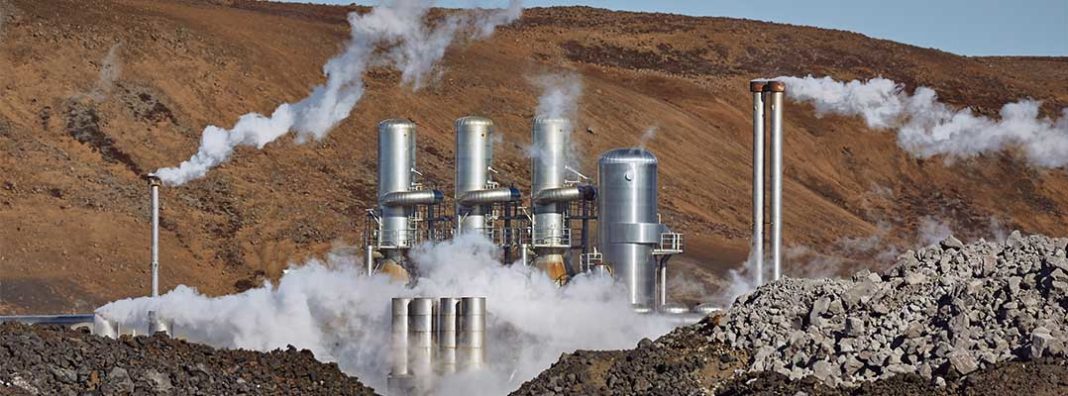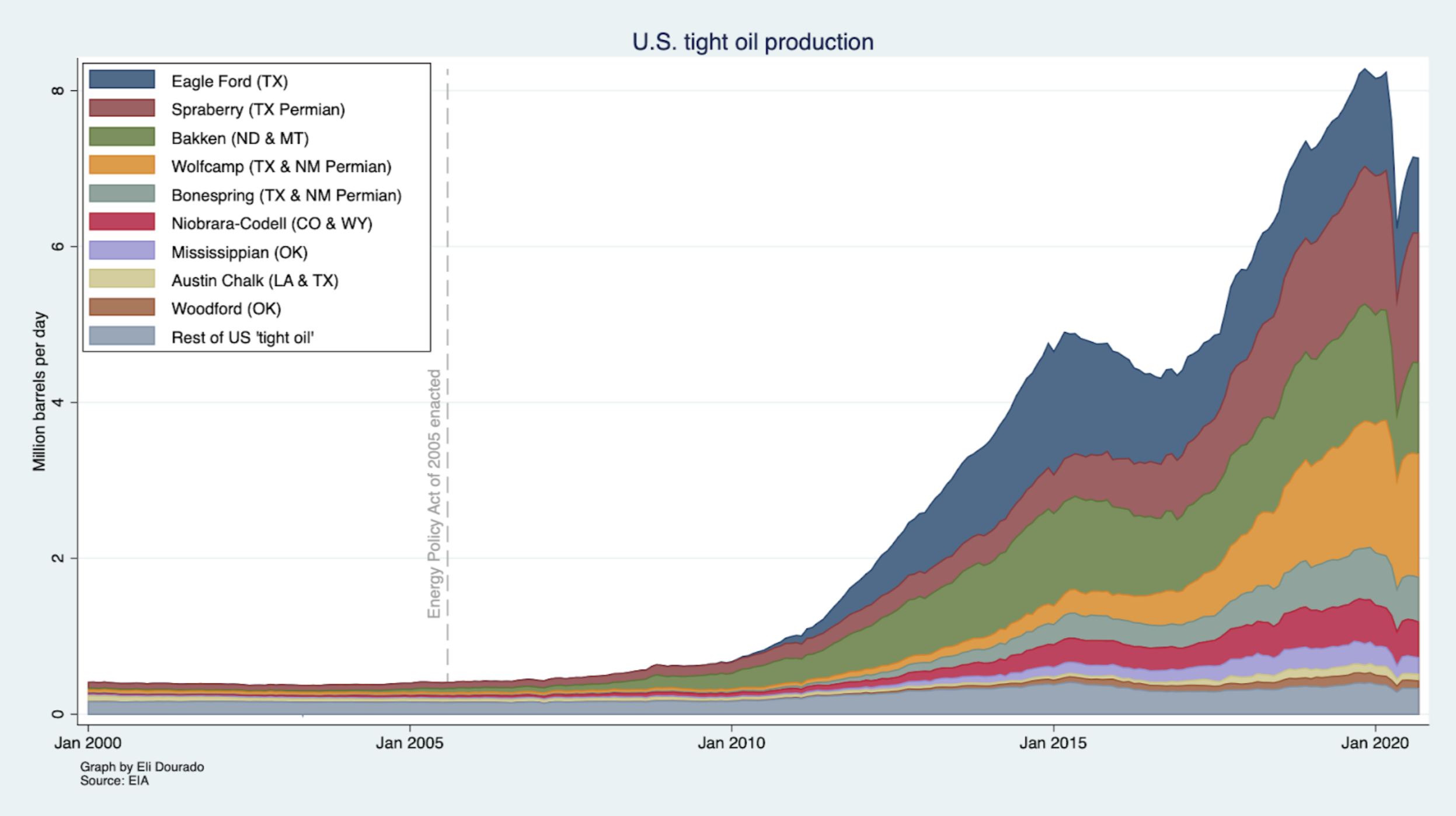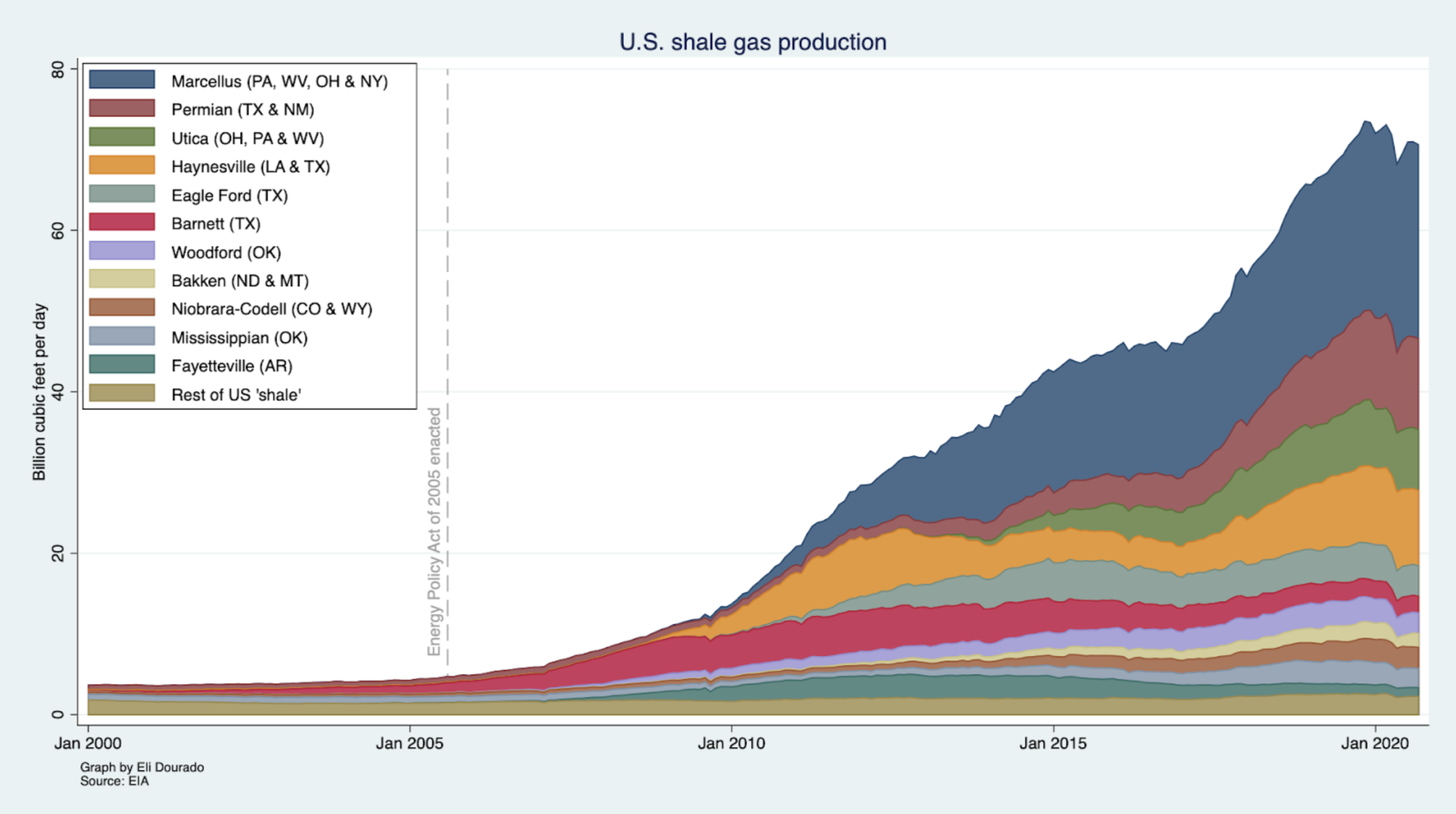
It’s hard to overstate the importance of the shale revolution. Unconventional oil and gas wells have made the United States a net energy exporter for the first time since the 1950s. The revolution has been a rare bright spot in U.S. economic productivity growth, which has stagnated since the 1970s. And indeed, as geopolitical strategist Peter Zeihan argues, its profound effects on the global order are continuing to play out.
The shale revolution was not inevitable. It was supported by key policy choices to foster the development of unconventional oil. In particular, the Energy Policy Act of 2005 was a critical vehicle by which this support was enacted.
One of the unsung heroes of the shale revolution was Section 390 of the Act, which created a presumption that oil and gas exploration and development on public lands would be categorically excluded from environmental review under the dreaded National Environmental Policy Act, provided it fell within certain limits.
I have written about NEPA before on the Benchmark. NEPA requires that before any major federal agency action — including approving a permit to drill on public land — the agency must either produce a statement hundreds of pages long detailing the environmental impacts or produce an assessment hundreds of pages long showing that there is no significant environmental impact. Either way, the result is years of paperwork. In my view, NEPA is one of the biggest culprits for the economic stagnation we have experienced since the law took effect in 1970. The law imposes no substantive environmental requirements, but its paperwork requirements result in much-prolonged timelines and a great deal of uncertainty for investors. As Brink Lindsey and Samuel Hammond, our friends at the Niskanen Center, put it, NEPA has had a “chilling effect on investment.”
What makes unconventionals unconventional is that they are harder to get to than conventional oil and gas. They require advanced extraction techniques, such as developing oil sands, directional drilling, and hydraulic fracturing. Unconventional wells are usually small relative to the big deposits sought after by the oil majors. They are riskier — the oil is more expensive to extract, and the well has a higher likelihood of coming up dry.
Given this high level of risk, think how absurd it would be to explore for unconventional reserves on public lands under the full burden of NEPA. Oil and gas entrepreneurs would have to spend years documenting the lack of significant environmental impact before they could drill even one inch into the ground. After all that regulatory burden, the well could fail. The idea is preposterous. The requirements of NEPA made only the most incremental unconventional ventures possible.
Section 390 created a rebuttable presumption that NEPA paperwork is not required under certain circumstances, such as when the surface disturbance of the well was less than 5 acres, or when a previous well had been drilled at the site within the last 5 years. This categorical exclusion allowed very rapid turnarounds in permitting, which in turn allowed a lot more exploration to proceed. This exploration and subsequent development led to enormous technological improvements in drilling practices through “learning by doing,” which expanded the set of feasible oil wells. This positive feedback loop between the development of technology and the expansion of production led to the shale revolution we observe today. Without the categorical exclusion from NEPA, the whole process would have been smothered in the cradle.
In turn, as David Roberts writes in a recent piece for Vox, the improvements we have made in drilling technology due to shale oil’s feedback loop are now enabling a new energy revolution: enhanced and advanced geothermal. Traditional hydrothermal energy — which provides 65% of Iceland’s primary energy — relies on both heat and the right kind of rock formations to be present to produce energy. These traditional geothermal systems produce always-on, zero-emissions electricity, but they are not scalable. They can only be located where volcanic activity exists near the surface, signaled by features such as fumaroles and hot springs. This limitation is why the US has less than 4 GW of geothermal production today, all located in the West.
With the advancements in drilling technology generated by the shale oil boom, new resources become available. Instead of needing both heat and the right kinds of rock formations to be present, we can engineer the subsurface to generate the right geology. Heat is available anywhere on the planet if you drill deep enough. This “enhanced geothermal” expands the number of locations where energy extraction is viable.
An even bigger leap forward is so-called advanced geothermal, which relies on closed loops to harvest heat energy. Instead of injecting water into a geothermal reservoir and extracting it through a production well, a closed loop system simply circulates fluid from the surface deep into the Earth and back through a pipe system. The fluid picks up heat when it is deep underground, and this heat energy can be extracted and converted into electricity back at the surface.
This isn’t science fiction. This technology could be matured within the decade with the right policy support. When advanced geothermal becomes available, it will make zero-emissions baseload energy possible essentially anywhere on the planet, all but solving the power production component of climate change. Furthermore, with improvements in drilling technology, advanced geothermal can be very cheap, potentially between 1 and 2¢ per kWh. Unlike wind and solar, cheap advanced geothermal electricity would be reliably available 24 hours a day.
With such cheap and reliable baseload energy, the industrial opportunities are endless. Tiny Iceland, with its bountiful conventional geothermal resources, is the world’s 11th biggest aluminum producer. What new, energy-intensive goods would the United States produce if it had access to dirt-cheap clean energy in all 50 states? Advanced geothermal is going to create an enormous economic boom for whichever country gets there first.
The only problem is ensuring that enhanced and advanced geothermal technology can get started in the learning-by-doing loop. Section 390 of the Energy Policy Act of 2005 solved this problem for oil and gas, creating a categorical exclusion for drilling small wells on public lands. But no such expedited process exists for geothermal — a baffling oversight given that drilling for geothermal is essentially identical to drilling for oil and gas.
Fervo CEO Tim Latimer discussed this issue on a panel at this year’s Pivot2020 conference, where oil and gas veterans discussed applying their skills to the nascent geothermal industry. Latimer’s experience is telling.
“I’ve been astounded as I’ve entered this industry coming from the oil and gas space, where we have very responsive regulators that work with us to tell us what to do and where to do it, and we were able to get projects permitted very quickly…A common experience for me in geothermal is we submit all of the necessary paperwork, regulations, environmental impact assessments to the regulatory bodies and it sits there for months and months and months and we actually can’t even get a response. When you ping them about it, they say, “We don’t have the resources.” So the same office that has many resources dedicated to oil and gas to do these reviews doesn’t have it for geothermal.”
Because oil and gas has a categorical exclusion in Section 390, it takes far fewer resources for the Department of the Interior to approve an oil and gas well. But if you drill the exact same well for geothermal energy, it takes a ton of agency manpower, and that creates an obstacle to permitting. These geothermal wells are drilled with the same equipment and workforce as oil and gas wells, with the same surface footprint and the same small local environmental impact. It’s the same industry — you’re just drilling for heat instead of oil.
If we want to reap the enormous benefits that advanced geothermal offers for the climate and the economy, we need to get the feedback cycle of learning-by-doing and drilling improvements going. That requires leveling the playing field on permitting between shale oil and geothermal. It’s a no-brainer: create a Section 390 for geothermal.



